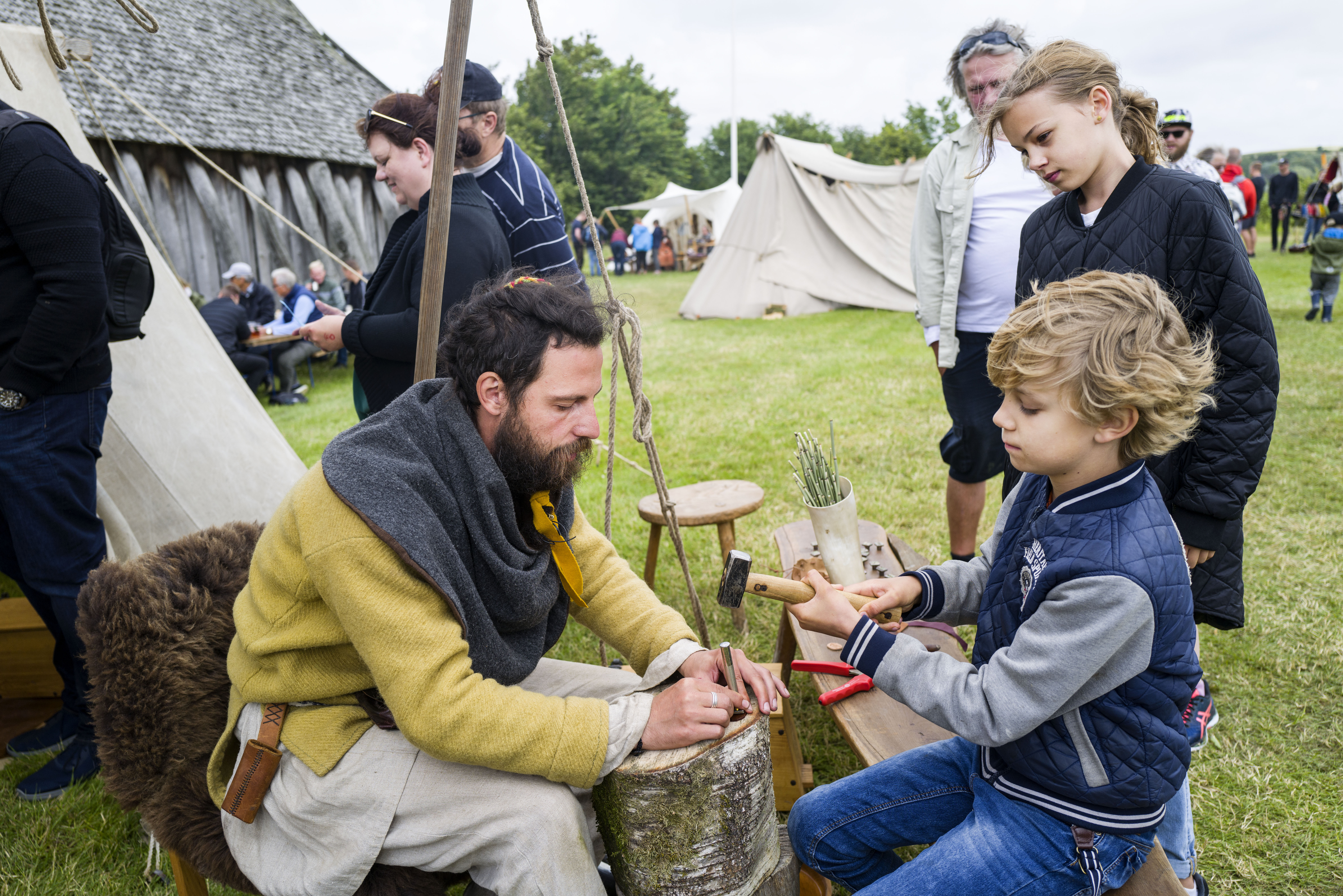
With a diameter of 120 meters, Fyrkat has a significant position in the landscape at Hobro.
During the excavation of the fortress, the archaeologists found a burial site with 30 graves with both men, women, and children. One woman’s grave stood out as the woman was buried with a number of unusual jewellery and objects, which suggest that she was a völva – a pagan sorceress, known among other things from Norse mythology. The völva was perhaps a kind of adviser to Harald Bluetooth, who had the ring fortresses built. A piece of jewellery found at Borgring in Køge is identical to a piece of jewellery in the völva’s grave and shows that she has been in both places.
The grave at Fyrkat emphasises that the ring fortresses were built in a time of upheaval, when Harald Bluetooth turned his back on the Norse paganism and was Christianised. At the end of 2024, a new exhibition at Fyrkat will open with the most important finds from the ring fortress – including the grave of the völva.
In the immediate vicinity of Fyrkat itself is a reconstructed nobleman’s estate, as it looked at Harald Bluetooth’s time. Vikingegården, as it is called, consists of several houses, and on selected days in the summer months, you can meet live presentations with Vikings in their workshops or participate in various Viking activities for the whole family.
At Vikingegården you will also find a mythological playground for children of all ages as well as a well-stocked museum shop.